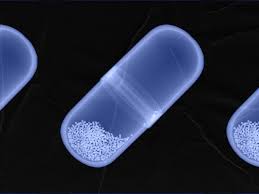Methocarbamol is commonly prescribed for the relief of muscle spasms and pain that are related to acute musculoskeletal conditions. When combined with rest and physical therapy, it is used to manage skeletal muscle conditions such as back pain, strains or sprains. When taken orally, normal doses range from 1.5 g to 2.0g three-to-four times daily depending on symptoms; relief is often felt within about half-an-hour or an hour following oral dosages era published benefit (34).
Because methocarbamol affects the central nervous system, this is one of its major on label uses. Unlike other muscle relaxers that act directly on the muscles, methocarbamol only affects the brain and spinal cord to inhibit nerve signals causing painful spasms. This mode of action suits short-term relief such as whiplash, lower back pain or work out strain. If clinical studies are anything to go by, the use of methocarbamol can result in 40%-60% reduction in muscular pain during initial phase (around first few days), which makes it a perfect alternative for treatment of acute musculoskeletal.
Methocarbamol, in industry terminology, belongs to "centrally acting" muscle relaxants that are characterized by having healing effects on spasms rather than direct muscular activity. The importance of this classification helps in explaining that methocarbamol has beneficial effects without being too sedative or cause impairment which is a common side effect seen with some other alternative treatments.

A report in The Journal of Clinical Pharmacology showed that methocarbamol can improve tetanus symptoms along with other treatment methods. In doing so, it can be prescribed at higher dosages in the 2,000 mg every six hours range for more simple to severe muscle causing conditions.
For an outpatient setting, many healthcare professionals such as Dr. Emily Sanders recommend methocarbamol because it is a first-line drug and has the fastest onset of action with few untoward side effects. “Methocarbamol is short-acting and it has few adverse effects, so people who have acute muscle tightness or pain associated with back spasms can get some relief quickly,” she says.
On the other hand, due to the potential for pharmacokinetic side effects and possible adverse results in patients with liver or kidney damage, methocarbamol should be used cautiously. People with preexisting conditions may need more frequent testing and depending on the CFTR modulator a further dose adjustment.
Beyond just providing relief to sore muscles, methocarbamol is also used in a variety of other ways that we will see later for those looking into what is methocarbamol used for. Methocarbamol is thus a safe, effective pharmacologic therapy for musculoskeletal pain that runs the gamut from acute sprains to serious conditions like tetanus.